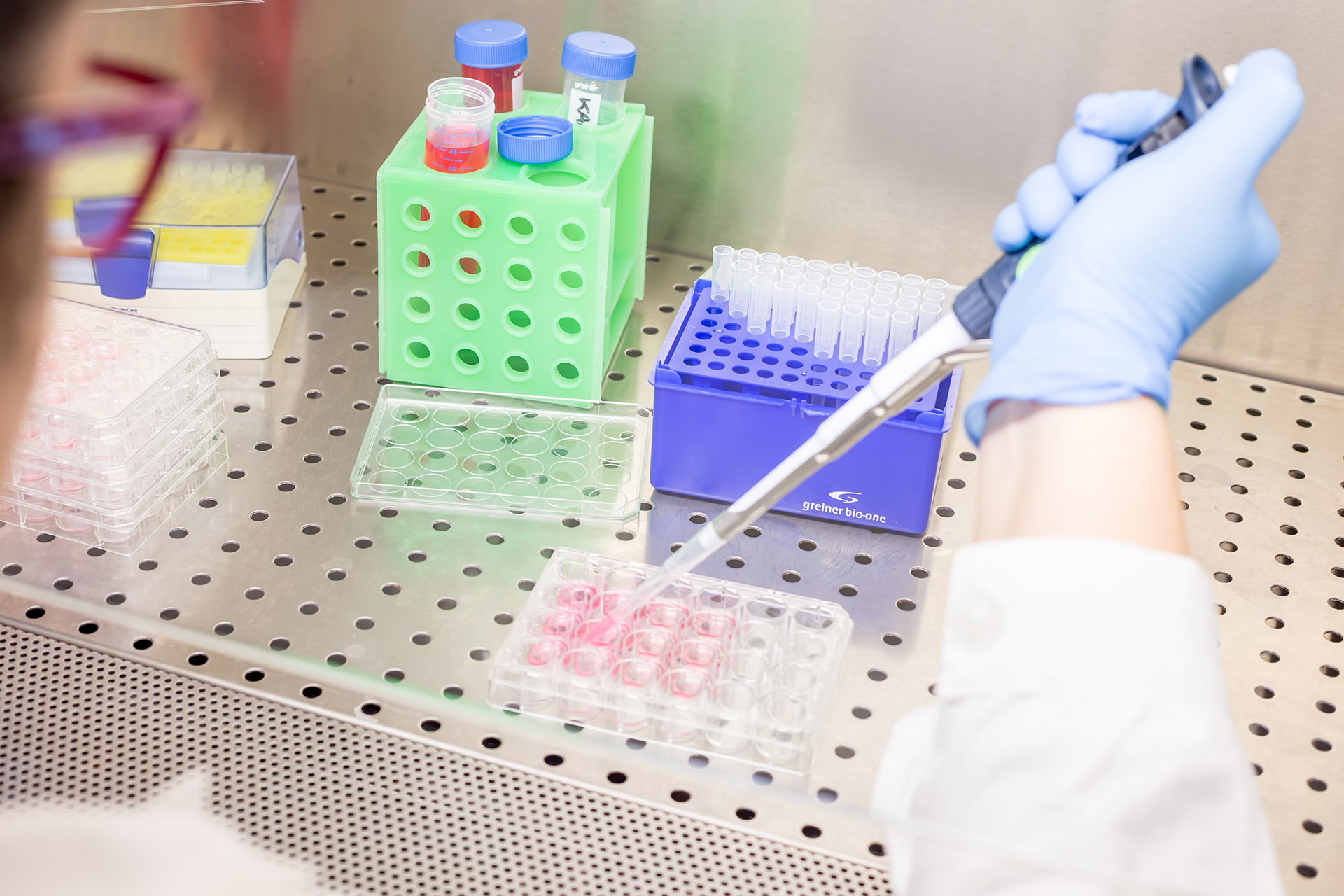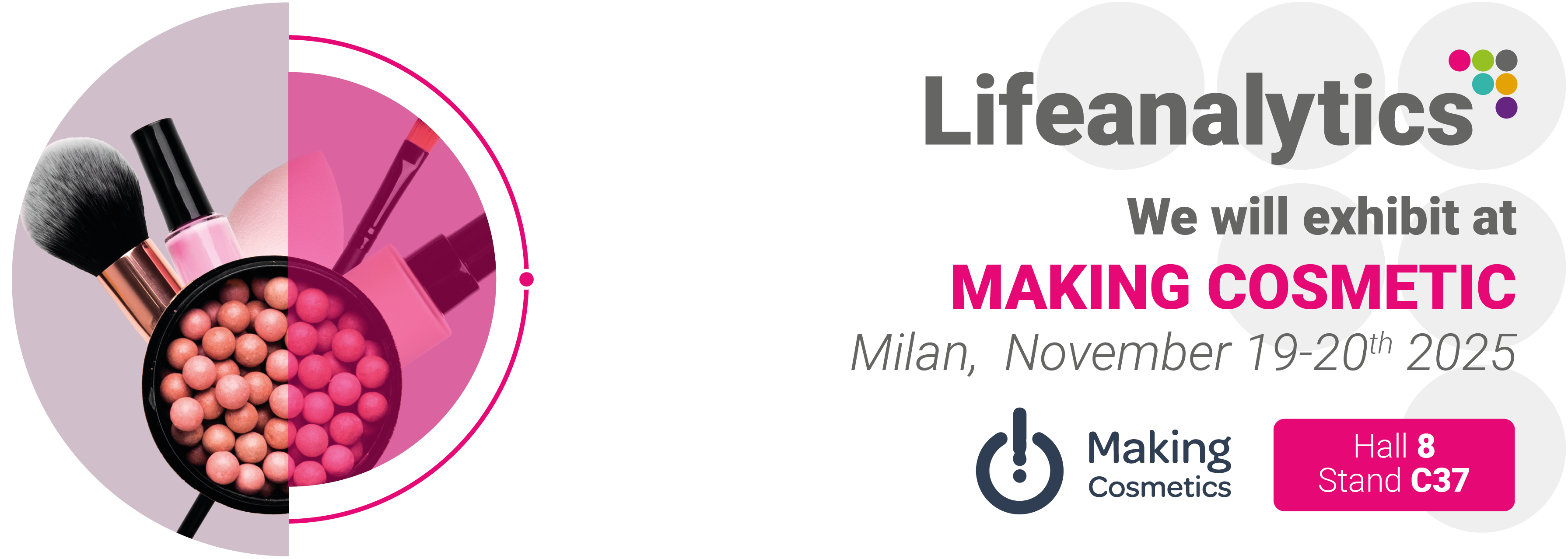ABICH’s Cell Biology and Toxicology laboratory performs in-vitro safety and efficacy tests on specific cell lines and in-vitro reconstructed human tissue to evaluate cosmetics, raw materials, and medical devices.
The wide range of available protocols allow to test raw materials and consumer products like cosmetics, medical devices, and textiles, in line with OECD methods, ISO standard, and GLP.
The Cell Biology Department staff is also available to develop customised experimental protocols and research specific in-vitro models allowing to test samples on the basis of their specific properties and applications.
Any chemical and microbiological analysis can be carried out in-house, which allows to perform multidisciplinary experiments.
In-vitro safety testing offered by Abich:
- Cytotoxicity assays on cosmetics, ingredients and medical devices according to UNI EN ISO 10993-5.
- Cytotoxicity testing: for medical devices, in line with the UNI EN ISO 10993-5 standard.
- Eye irritation testing: on monolayer cells and 3D reconstructed corneal epithelium.
- Eye corrosion testing: “fluorescein leakage” (OECD 460).
- Skin irritation testing: on cell monolayers and in-vitro reconstructed epithelia of different origin (OECD 439).
- Skin corrosion testing: (OECD 431, 435).
- Percutaneous absorption testing: (OECD 428).
- Skin sensitization testing: (THP-1, dendritic cells).
- Phototoxicity assay (OECD 432 on cell monolayers)
- Ames testing: mutagenesis (OECD 471).
- Carcinogenesis in vitro assay (OECD guidance document n. 231).
- Ecotoxicity testing: on Daphnia Magna (OECD 202) and seaweeds (OECD 201).
- Skin irritation test on 3D reconstituted human epidermis for medical devices (ISO 10993-23).
- Skin irritation test on 3D reconstituted human epidermis for medical devices (ISO 10993-23).
- Irritation tests on 3D reconstituted human epithelia (vaginal, gengival, oral, respiratory…).
- Eye irritation tests (OECD 491, 492, 492B, 496).
- Skin sensitisation assay OECD 442D (keratinosens).
- Skin sensitisation assay OECD 442E (IL-8 Luc Assay, hCLAT, GARDTM).
- Skin sensitisation assay on 3D reconstitued human skin (IL-18 RHE Assay, SENS-IS).
- Phototoxicity assay (OECD 498 on 3D epidermis).
- Biodegradability test (OECD 301F).
- Mutagenesis assay in mammal cells (Comet assay).
- Assays for the evaluation of hormonal endocrin disruptor effects (OECD 456, 458, 455).
- Percutaneous absorption test with Franz cells: test on human reconstituted 3D epidermis and epithelia, on ex vivo epidermis, on wounded epidermis etc.
- Cytotoxicity assays to aestimate in vitro the oral LD50 value (OECD guidance document 129).
In-vitro efficacy testing offered by Abich:
- Antioxidant and antiradical activity testing: on skin cells (ROS analysis);
- Direct antioxidant activity assay (es ORAC TEST).
- Skin anti-ageing and redensifying activity testing: mitogenic activity, stimulation of protein synthesis, stimulation of the protein synthesis by extracellular matrix (collagen, elastin, fibronectin, etc.);
- Anti-inflammatory activity testing: on skin cells and in-vitro reconstructed epithelia of different origin;
- Evaluation of pro-inflammatory potential: through the analysis of cytokines and growth factors (IL-1α, IL-1β, IL-8, GM-CSF, TNF-α);
- Cell proliferation testing: on skin cells;
- Melanogenesis modulation testing: increase/inhibition of melanin synthesis for depigmentation or pigmentation products;
- Percutaneous absorption testing: on skin reconstructed according to the OECD 428 method;
- Skin barrier testing : on reconstructed skin;
- Keratolytic effect assessment testing: on reconstructed skin;
- Wound healing activity assays on endothelial cells and fibroblasts (healing products and ingredients, antistretchmarks products).
- Immune response modulation testing: through the analysis of specific mediators (i.e., histamine, IL-1α, TNF-α) for anti-itch activity, inhibition of sensitization, immunostimulant activity;
- Evaluation of cellular senescence;
- Sebum normalization activity testing: lipase inhibition;
- Evaluation of the inhibition of 5-α reductase enzyme (hair growth, acne, sebum regulation).
- Skin hydrating activity of cells in monolayer or 3D reconstituted epidermis.
- In-vitro testing on sun protection products: UVA-PF in line with the ISO 24443: 2012/COLIPA 2011 standard, SPF UVA “Broad spectrum” in line with the FDA 2011 and AS/NZS 2604:2012 standard, UVA/UVB ratio in line with the Boots Star Rating 2008, blue light protection and IRA protection.
- Assay for the evaluation of tirosinase gene expression on monolayer cells.
- Assay for the direct evaluation of the modulation of enzimatic activity (i.e. Tirosinase, Acetilcolinesterase, Collagenase and other metalloproteinases).
- Anti-pollution efficacy against smog and toxic chemicals. Lipolitic activity on adipocytes.
- Inhibition of neo-angiogenesis through analysis of VEGF expression (i.e.anti-couperose products).
- Test to support barrier effact towards heat (IR) on human 3D reconstituted epidermis.
- Percutaneous absorption tests with Franz cells on human 3D reconstituted epithelia and epidermis, on ex vivo epidermis, on wounded epidermis to evaluate the permeation of ingredients , the efficacy of carriers or the barrier effect against permeation.
- In vitro test of products for acne rosacea treatment through the analysis of gene expression of markers involved in skin inflammation and linked to rosacea.
- Trichological tests in vitro on human hair locks to support customized cosmetic claims Test like for example: resistance to break, combability, color strenght and many others.










